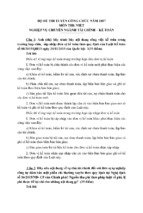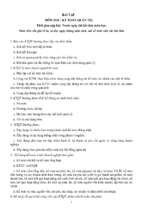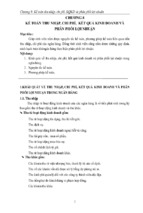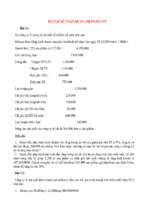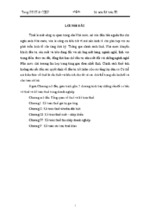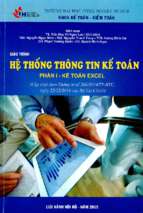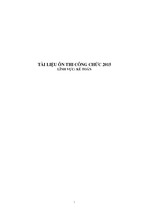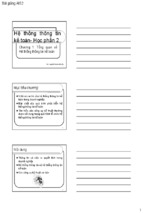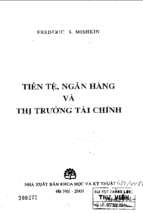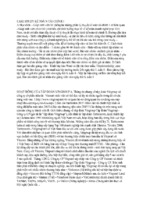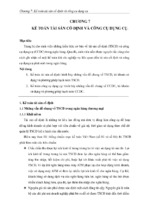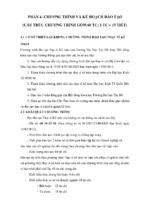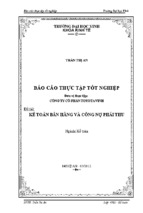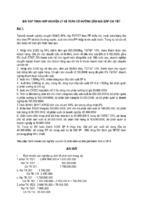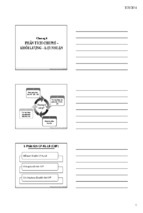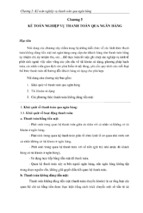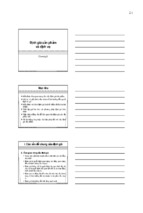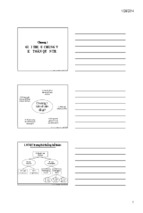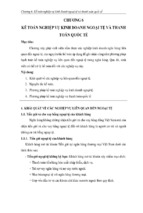1. Capital budgeting
1. Which of the following statements concerning the principles underlying the
capital budgeting process is most accurate?
A. Cash flows should be based on opportunity costs.
B. Financing costs should be reflected in a project's incremental cash flows.
C. The net income for a project is essential for making a correct capital budgeting
decision.
A Cash flows are based on opportunity costs. Financing costs are recognized in the
project's required rate of return. Accounting net income, which includes non-cash
expenses, is irrelevant; incremental cash flows are essential for making correct capital
budgeting decisions
2. Which of the following statements about the payback period method is Least
accurate? The payback period:
A. provides a rough measure of a project's liquidity.
B. considers all cash flows throughout the entire life of a project.
C. is the number of years it takes to recover the original cost of the investment.
The payback period ignores cash flows that go beyond the payback period
3. Which of the following statements about NPV and IRR is Least accurate?
A. The IRR is the discount rate that equates the present value of the cash inflows
with the present value of outflows.
B. For mutually exclusive projects, if the NPV method and the IRR method give
conflicting rankings, the analyst should use the IRRs to select the project.
C. The NPV method assumes that cash flows will be reinvested at the cost of capital,
while IRR rankings implicitly assume that cash flows are reinvested at the IRR.
NPV should always be used ifNPV and IRR give conflicting decisions.
4. Which of the following statements is Least accurate? The discounted payback
period:
A. frequently ignores terminal values.
B. is generally shorter than the regular payback.
C. is the time it takes for the present value of the project's cash inflows to equal the
initial cost of the investment.
The discounted payback is longer than the regular payback because cash flows are
discounted to their present value.
5. Which of the following statements about NPV and IRR is Least accurate?
A. The IRR can be positive even if the NPV is negative.
B. When the IRR is equal to the cost of capital, the NPV will be zero.
C. The NPV will be positive if the IRR is less than the cost of capital.
Use the following data to answer Questions 6 through 10.
A company is considering the purchase of a copier that costs $5,000. Assume
required rate of return of 10% and the following cash flow schedule:
• Year 1: $3,000.
• Year 2: $2,000.
• Year 3: $2,000.
If IRR is less than the cost of capital, the result will be a negative NPV.
6. What is the project's payback period?
A. 1.5 years.
B. 2.0 years.
C. 2.5 years.
Cash flow (CF) after year 2 = -5,000 + 3,000 + 2,000 = 0. Cost of copier is paid back in
the first two years.
7. The project's discounted payback period is closest to:
A. 1.4 years.
B. 2.0 years.
C. 2.4 years.
Year 1 discounted cash flow = 3,000 / 1.10 = 2,727; year 2 DCF = 2,000/ 1.1 0^2 =
1 ,653; year 3 DCF = 2,000 /1.10^3 = 1,503. CF required after year 2 = -5,000 + 2,727 +
1 ,653 = -$620, 620 /year 3 DCF = 620 /1,503 = 0.41, for a discounted payback of 2.4
years.
Using a financial calculator:
Year 1: I = 10o/o; FV = 3,000; N = 1 ; PMT = 0; CPT -> PV = -2,727
Year 2: N = 2; FV = 2,000; CPT -> PV = -1,653
Year 3: N = 3; CPT ->PV = -1 ,503
5,000 - (2,727 + 1,653) = 620, 620 I 1 ,503 = 0.413, so discounted payback = 2 + 0.4=
2.4
8. What is the project's NPV?
A. -$309.
B. +$883.
c. +$1 ,523.
NPV = CF0 + (discounted cash flows years 0 to 3 calculated in Question 7) = -5,000
+ (2,727 + 1,653 + 1,503) = -5,000 + 5,833 = $883.
9. The project's IRR is closest to:
A. 1 0%.
B. 1 5%.
c. 20%.
From the information given, you know the NPV is positive, so the IRR must be greater
than 1O%. You only have two choices, 15o/o and 20o/o. Pick one and solve the NPV; if
it's not close to zero, you guessed wrong-pick the other one. Alternatively, you can solve
directly for the IRR as CF0 = -5,000, CF 1 = 3,000, CF2 = 2,000, CF3 = 2,000. IRR =
20.64%.
10. What is the project's profitability index (PI)?
A. 0.72.
B. 1 . 1 8.
c. 1.72.
PI = PV offuture cash flows /CF0 (discounted cash flows years 0 to 3 calculated in
Question 7). PI = (2,727 + 1,653 + 1 ,503) I 5,000 = 1. 177.
11. An analyst has gathered the following information about a project:
• Cost $10,000
• Annual cash inflow $4,000
• Life 4 years
• Cost of capital 12%
Which of the following statements about the project is least accurate?
A. The discounted payback period is 3.5 years.
B. The IRR of the project is 21.9%; accept the project.
C. The NPV of the project is +$2, 1 49; accept the project.
Use the following data for Questions 12 and 13.
An analyst has gathered the following data about two projects, each with a 12%
required rate of return.
Project A
Project B
Initial cost $ 15,000
$20,000
Life
4 years
5 years
Cash inflows $5,000/year
$7,500/year
The discounted payback period of 3.15 is calculated as follows:
Cfo= - 10,000; PVCF1 = 4000/1,12= 3,571; PVCF2 =4000/ 1.12^2 = 3,189; PVCf3 =
4000/1.12^3 = 2,847; and PVCF4 = 4000/1.12^4 = 2,542. CF after year 3 = - 1 0,000 +
3,571 + 3,189 + 2,847= - 393
393/year 4DCF = 393/2,542 = 0,15 for a discounted payback period of 3.15 years.
12. If the projects are independent, the company should:
A. accept Project A and reject Project B.
B. reject Project A and accept Project B.
C. accept both projects.
Independent projects accept all with positive NPVs or IRRs greater than cost of capital.
NPV computation is easy-treat cash flows as an annuity.
Project A: N = 5; I = 12; PMT = 5,000; FV = 0; CPT -> PV = -18,024
NPVA = 18,024 - 15,000 = $3,024
Project B: N = 4; I = 12; PMT = 7,500; FV = 0; CPT ->PV = -22,780
NPVB = 22,780 - 20,000 = $2,780
13. If the projects are mutually exclusive, the company should:
A. reject both projects.
B. accept Project A and reject Project B.
C. reject Project A and accept Project B.
Accept the project with the highest NPV.
14. The NPV profiles of two projects will intersect:
A. at their internal rates of return.
B. if they have different discount rates.
C. at the discount rate that makes their net present values equal.
The crossover rate for the NPV profiles of two projects occurs at the discount rate that
results in both projects having equal NPVs.
15. The post-audit is used to:
A. improve cash flow forecasts and stimulate management to improve operations
and bring results into line with forecasts.
B. improve cash flow forecasts and eliminate potentially profitable but risky
projects.
C. stimulate management to improve operations, bring results into line with
forecasts, and eliminate potentially profitable but risky projects.
A post-audit identifies what went right and what went wrong. It is used to improve
forecasting and operations.
16.Based on surveys of comparable firms, which of the following firms would be
most likely to use NPV as its preferred method for evaluating capital projects?
A. A small public industrial company located in France.
B. A private company located in the United States.
C. A large public company located in the United States.
According to survey results, large companies, public companies, U.S. companies, and
companies managed by a corporate manager with an advanced degree are more likely to
use discounted cash flow techniques like NPV to evaluate capital projects.
17. Fullen Machinery is investing $400 million in new industrial equipment. The
present value of the future after-tax cash flows resulting from the equipment is $700
million. Fullen currently has 200 million shares of common stock outstanding, with
a current market price of $36 per share. Assuming that this project is new
information and is independent of other expectations about the company, what is
the theoretical effect of the new equipment on Fullen's stock price? The stock price
will:
A. decrease to $33.50.
B. increase to $37.50.
C. increase to $39.50.
The NPV of the new equipment is $700 million - $400 million = $300 million. The
value of this project is added to Fullen's current market value. On a per-share basis, the
addition is worth $300 million I 200 million shares, for a net addition to the share price
of $1 .50. $36.00 + $ 1.50 = $37.50.
2. Cost of capital
1. A company has $5 million in debt outstanding with a coupon rate of 12%.
Currently, the yield to maturity (YTM) on these bonds is 14%. If the firm's tax rate
is 40%, what is the company's after-tax cost of debt?
A. 5.6%.
B. 8.4%.
c. 14.0%.
kd(1 - t) = (0. 14)(1 - 0.4) = 8.4%
2. The cost of preferred stock is equal to:
A. the preferred stock dividend divided by its par value.
B. [(1 - tax rate) times the preferred stock dividend] divided by price.
C. the preferred stock dividend divided by its market price.
Cost of preferred stock = kps = Dps /P
3. A company's $100, 8% preferred is currently selling for $85. What is the
company's cost of preferred equity?
A. 8.0%.
B. 9.4%.
c. 10.8%.
kps= Dps/ Pps.Dps = $ 100 X 8% = $8%, kps = 8 /85 = 9.4%
4. The expected dividend is $2.50 for a share of stock priced at $25. What is the cost
of equity if the long-term growth in dividends is projected to be 8%?
A. 15%.
B. 16%.
c. 18%.
Using the dividend yield plus growth rate approach: kce = (D1 I P0) + g = (2.50 / 25.00)
+ 8% = 18%.
5. An analyst gathered the following data about a company:
Capital structure
30% debt
20% preferred stock
50% common stock
Required rate of return
10% for debt
11 % for preferred stock
18% for common stock
Assuming a 40% tax rate, what after-tax rate of return must the company earn on
its investments?
A. 13.0%.
B. 14.2%.
c. 18.0%.
WACC = (wd)(kd)(l - t) + (wps)(kps) + (Wce)(Kce) = (0.3)(0.1)(1 - 0.4) + (0.2)(0. 1 1 ) +
(0.5)(0. 1 8) = 13%
6. A company is planning a $50 million expansion. The expansion is to be financed
by selling $20 million in new debt and $30 million in new common stock. The beforetax required return on debt is 9o/o and 14% for equity. If the company is in the 40%
tax bracket, the company's marginal cost of capital is closest to:
A. 7.2%.
B. 10.6%.
c. 12.0%.
Wd = 20/(20 + 30) = 0.4, Wce = 30/(20 + 30) = 0.6
WACC = (Wd)(kd)(l - t) + (Wce,)(kce) = (0.4)(9)(1 - 0.4) + (0.6)(14) = 10.56% = MCC
Use the following data to answer Questions 7 through 10.
• The company has a target capital structure of 40% debt and 60% equity.
• Bonds with face value of $ 1,000 pay a 10% coupon (semiannual), mature in 20
years, and sell for $849.54 with a yield to maturity of 12%.
• The company stock beta is 1.2.
• Risk-free rate is 10%, and market risk premium is 5%.
• The company is a constant-growth firm that just paid a dividend of $2, sells for $27
per share, and has a growth rate of 8%.
• The company's marginal tax rate is 40%.
7. The company's after-tax cost of debt is:
A. 7.2%.
B. 8.0%.
c. 9.1 %.
kd(l - t) = 12(1 - 0.4) = 7.2%
8. The company's cost of equity using the capital asset pricing model (CAPM)
approach is:
A. 16.0%.
B. 16.6%.
c. 16.9%.
Using the CAPM formula, kce = Rfr + β[E(Rmkt) - RFR] = 10 + 1 .2(5) = 16%.
9. The company's cost of equity using the dividend discount model is:
A. 15.4%.
B. 16.0%.
c. 16.6%.
D1 = D0 ( 1 + g) = 2(1 .08) = 2.16; kce = (D1 I P0) + g = (2. 1 6 I 27) + 0.08 = 16o/o
10. The company's weighted average cost of capital (using the cost of equity from
CAPM) is closest to:
A. 12.5%.
B. 13.0%.
c. 13.5%.
WACC = (wd)(kd)(l - t) + (wc.,)(kce) = (0.4)(7.2) + (0.6)(16) = 12.48%
1 1. What happens to a company's weighted average cost of capital (WACC) if the
firm's corporate tax rate increases and if the Federal Reserve causes an increase in
the risk-free rate, respectively? (Consider the events independently and assume a
beta of less than one.)
Tax rate increase
Increase in risk-free rate
A. Decrease WACC
Increase WACC
B. Decrease WACC
Decrease WACC
C. Increase WACC
Increase WACC
An increase in the corporate tax rate will reduce the after-tax cost of debt, causing the
WACC to fall. More specifically, because the after-tax cost of debt = (kd)(l - t), the term
(1 - t) decreases, decreasing the after-tax cost of debt. If the risk-free rate were to
increase, the costs of debt and equity would both increase, thus causing the firm's cost of
capital to increase.
12. Given the following information on a company's capital structure, what is the
company's weighted average cost of capital? The marginal tax rate is 40%.
Type of capital
cost
Bonds
Preferred stock
Common stock
A. 10.0%.
B. 10.6%.
Percent of Before-tax capital structure
40%
5%
55%
before –tax component
7,5%
11%
15%
c. 11.8%.
WACC = (wd)(kd)(l - t) + (wps)(kps) + (wce)(kce) = (0.4)(7.5)(1 - 0.4) + (0.05)(1 1) +
(0.55)(15) = 10.6% ofequity index
of developing country
13. Derek Ramsey is an analyst with Bullseye Corporation, a major U.S.-based
discount retailer. Bullseye is considering opening new stores in Brazil and wants to
estimate its cost of equity capital for this investment. Ramsey has found that:
• The yield on a Brazilian government 10-year U.S. dollar-denominated bond is
7.2%.
• A 10-year U.S. Treasury bond has a yield of 4.9%.
• The annualized standard deviation of the Sao Paulo Bovespa stock index in the
most recent year is 24%.
• The annualized standard deviation of Brazil's U.S. dollar-denominated 1 0-year
government bond over the last year was 18%.
• The appropriate beta to use for the project is 1 .3.
• The market risk premium is 6o/o.
• The risk-free interest rate is 4.5%.
Which of the following choices is closest to the appropriate country risk premium
for Brazil and the cost of equity that Ramsey should use in his analysis?
Country risk premium for Brazil
A. 2.5%
B. 2.5%
c. 3.1%
Cost of equity for project
1 5.6%
16.3%
16.3%
CRP = sovereign yield spread
annualized standard deviation of equity index of developing country
annualized standard deviationof sovereignbond market terms deve loped market currency
= (0.072 - 0.049)(0.18 0·24) = 0.031, or 3.1%
k = Rf +β[E(Rmkt) - Rf + CRP]
= 0.045 + 1.3[0.06 + 0.031]
= 0.163, or 16.3%
14. Manigault Industries currently has assets on its balance sheet of $200 million
that are financed with 70o/o equity and 30o/o debt. The executive management team
at Manigault is considering a major expansion that would require raising additional
capital. Rosannna Stallworth, the CPO of Manigault, has put together the following
schedule for the costs of debt and equity:
Amount of New
After-Tax Cost of
Amount of New
Cost of Equity
Debt (in millions)
Debt
Equity (in millions)
$0 to $49
4.0%
$0 tO $99
7.0%
$50 to $99
4.2%
$ 100 to $ 199
8.0%
$100 to $149
4.5%
$200 to $299
9.0%
In a presentation to Manigault's Board of Directors, Stallworth makes the following
statements:
Statement 1: If we maintain our target capital structure of 70% equity and 30%
debt, the break point at which our cost of equity will increase to 8.0% is $ 1 85
million in new capital.
Statement 2: If we want to finance total assets of $450 million, our marginal cost of
capital will increase to 7.56%.
Are Stallworth's Statements 1 and 2 most Likely correct or incorrect?
Statement 1
Statement 2
A. Correct
Correct
B. Incorrect
Correct
C. Incorrect
Incorrect
Statement 1 is incorrect. The break point at which the cost of equity changes to 8.0% is:
Break point=
amount of capital at which the componen t ' scost of capital changes
weight the component theWACC
=
$ 100 million
$ 142,86
0,7
Statement 2 is also incorrect. If Manigault wants to finance $450 million of total assets,
that means that the firm will need to raise $450 - $200 = $250 million in additional
capital. Using the target capital structure of 70% equity, 30% debt, the firm will need
to raise 0.70 x $250 = $ 175 million in new equity and 0.30 x $250 = $75 in new debt.
Looking at rhe capital schedule, the cost associated with $75 million in new debt is
4.2%, and the cost associated with $ 175 million in new equity is 8.0%. The marginal
cost of capital at that point will be (0.3 x 4.2%) + (0.7 x 8.0%) = 6.86%.
15. Black Pearl Yachts is considering a project that requires a $1 80,000 cash outlay
and is expected to produce cash flows of $50,000 per year for the next five years.
Black Pearl's tax rate is 25%, and the before-tax cost of debt is 8%. The current
share price for Black Pearl's stock is $56 and the expected dividend next year is
$2.80 per share. Black Pearl's expected growth rate is 5%. Assume that Black Pearl
finances the project with 60% equity and 40% debt, and the flotation cost for equity
is 4.0%. The appropriate discount rate is the weighted average cost of capital
(WACC) . Which of the following choices is closest to the dollar amount of the
flotation costs and the NPV for the project, assuming that flotation costs are
accounted for properly?
Dollar amount of flotation costs
A. $4,320
NPV of project
$ 17,548
B. $4,320
$ 13,228
c. $7,200
$ 17,548
Because the project is financed with 60% equity, the amount of equity capital raised is
0.60 X $ 1 80,000 = $ 1 08,000.
Flotation costs are 4.0%, which equates to a dollar cost of $ 108,000 x 0.04 = $4,320.
After-tax cost of debt = 8.0% (1 - 0.25) = 6.0%
Cost of equity . ( =
$ 2,8
$ 56 ) +0.05 = 0.10, or 10.0%
WACC = 0.60(0.10) + 0.40(0.06) = 8.4%
$ 50,000
NPV= -$180,000 - $4,320 + 1,084
$ 50,000
5
1,084
+
$ 50,000 $ 50,000
2
3
1,084
1,084
+
$ 50,000
4
1,084
+
= $13,228
16. Jay Company has a debt-to-equity ratio of 2.0. Jay is evaluating the cost of
equity for a project in the same line of business as Cass Company and will use the
pure-play method with Cass as the comparable firm. Cass has a beta of 1 .2 and a
debt-to-equity ratio of 1.6. The project beta most Likely:
A. will be less than Jay Company's beta.
B. will be greater than Jay Company's beta.
C. could be greater than or less than Jay Company's beta
13. C
14. C
15. B
16. C The project beta calculated using the pure-play method is nor necessarily related in
a predictable way to the beta of the firm that is performing the project.
- Xem thêm -

